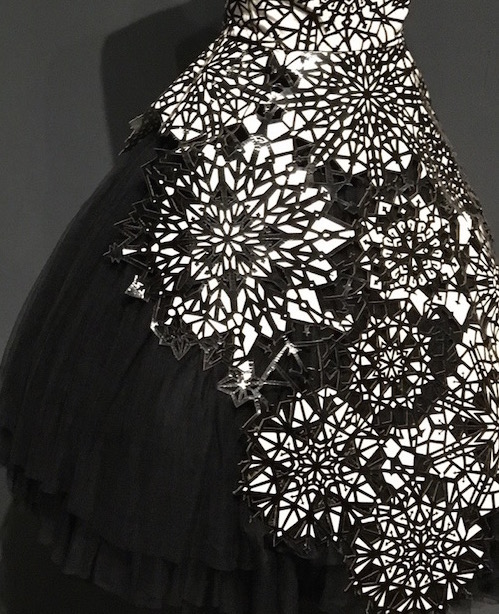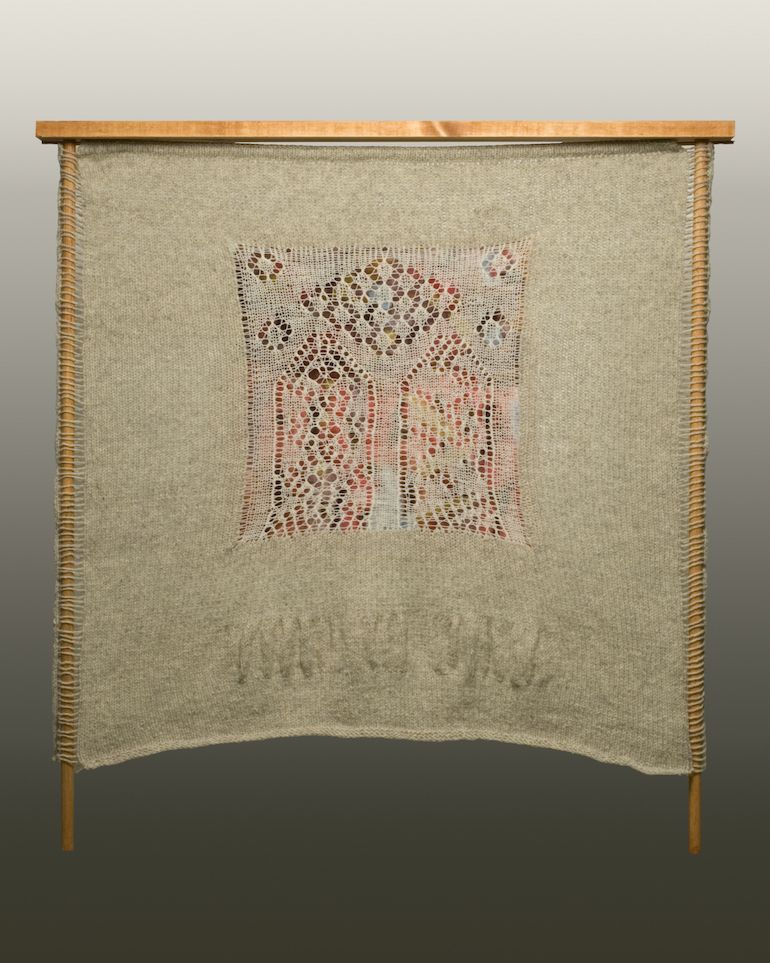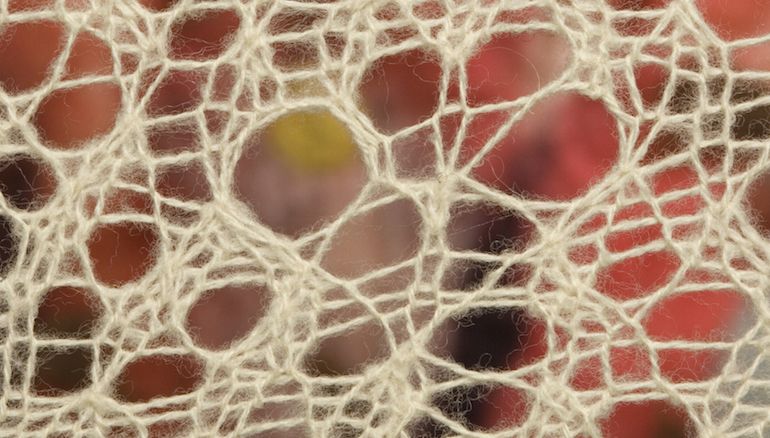I frequently layer surfaces in my sculptures to reveal or hide images and textures. If a layer is open and porous, it can create the impression of a window. If it is solid and thick, it can cover and conceal.
It is a technique used often in fashion, as I was reminded by an exhibition of Alexander McQueen dresses presented by Barrett Barrera Projects that I saw in St. Louis while attending the Surface Design Association conference and Innovations in Textiles 2019. One of these incredibly beautiful dresses caught my eye because of its use of layers. Placed over a delicate black tulle skirt was a black and white leather extension of the bodice. Partially covering the light tulle netting, this hard surface shielded the body. The finely cut geometric edges of the leather contrasted with the wavy surface beneath. This juxtaposition brought out the special qualities of each material.

Lace windows
Layers can do so many things. In my series of Contemplative Windows, I used a layer of lace to create an opening in the center of a rectangle of solid fabric.

© 2005 Eve Jacobs-Carnahan, Contemplative Window II, wool yarn, felted wool, wood, 49 x 46 x 6 inches, $1200. Photo by paulrogersphotography.com.
I suspended the openwork in front of a panel of brightly colored felted wool. The blurred nature of the felted wool gives the impression that you are looking at a distant scene, a forest, field, or jumble of buildings in a crowded town center. You can focus on the intricate lacework in front or ponder the far away image.

© 2005 Eve Jacobs-Carnahan, Contemplative Window II, detail. Photo by paulrogersphotography.com
Material strata
In Uncover, I placed tiers of knitting one on top of another, building up the surface. Here I wanted to convey the idea that reading is an opportunity for discovery. The eyeglasses emphasize the process of searching for meaning as the viewer peels away layers of information. Each stratum conceals the one below and must be figuratively removed. The bright yellow-green peeking through from underneath alludes to the fresh learning that comes from careful examination and study.

© 2005 Eve Jacobs-Carnahan, Uncover, handspun wool, paper ribbon, plastic, 3 x 7 x 10 inches, private collection. Photo by paulrogersphotography.com.
Another way that I have used layers is to add texture to smoother surfaces. I wanted to convey the softness of downy bird feathers in Shrill Call. The peach filigree suggests feathers, slightly ruffled by the wind, revealing a sturdier underlayer. It also lightly enhances the colors of the bird without making it too busy or chaotic.
© 2017 Eve Jacobs-Carnahan, Shrill Call, detail, handspun wool yarn, mulberry paper, sheet music, knitting needles, barrett, acrylic paint, 13 x 14 x 14 inches, $300.
Layers, like cloaks and coverings, create opportunities for looking. Seeing one material right up against another forces you to consider the individual essence of each. There is much to explore here.


Eve, You are as talented as a Spider..AND that is a COMPLIMENT.
I love the idea of being a spider. Thanks, Susan!
Great post Eve! I look forward to hearing more about the conference. It must have been very satisfying to make connections between what you were hearing/seeing there and your own work.